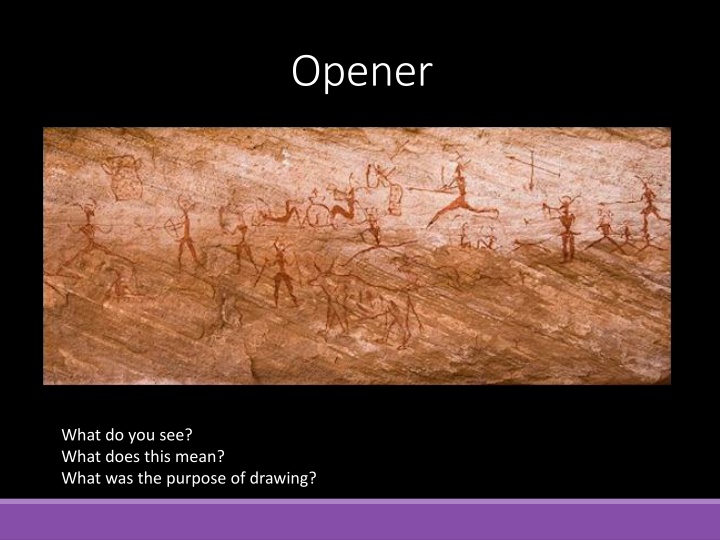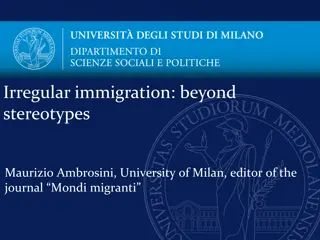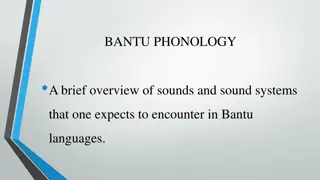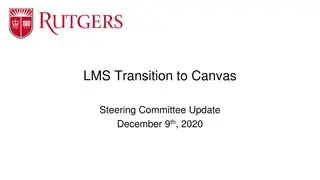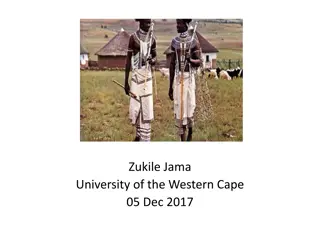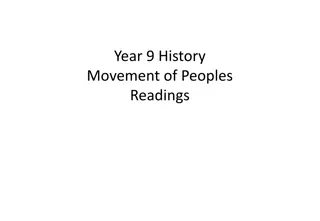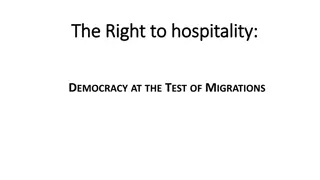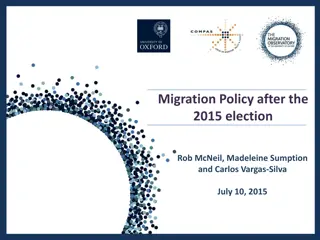Bantu Migrations - Origins, Structures, and Impacts
This content delves into the Bantu migrations, a significant series of movements by speakers of the Bantu language group in ancient Africa, exploring their origins, migration patterns, agricultural contributions, and cultural implications. Through images and detailed explanations, it highlights the transition from hunter-gatherer lifestyles to settled agriculture, showcasing the evolution of societies between 3500 BCE/BC to 500 BCE/BC.
Uploaded on Feb 20, 2025 | 0 Views
Download Presentation

Please find below an Image/Link to download the presentation.
The content on the website is provided AS IS for your information and personal use only. It may not be sold, licensed, or shared on other websites without obtaining consent from the author.If you encounter any issues during the download, it is possible that the publisher has removed the file from their server.
You are allowed to download the files provided on this website for personal or commercial use, subject to the condition that they are used lawfully. All files are the property of their respective owners.
The content on the website is provided AS IS for your information and personal use only. It may not be sold, licensed, or shared on other websites without obtaining consent from the author.
E N D
Presentation Transcript
Opener What do you see? What does this mean? What was the purpose of drawing?
Bantu Migrations STANDARD: STANDARD: SSWH1 ANALYZE THE ORIGINS, STRUCTURES, AND INTERACTIONS OF SOCIE SSWH1 ANALYZE THE ORIGINS, STRUCTURES, AND INTERACTIONS OF SOCIE TIES IN THE ANCIENT WORLD FROM 3500 BCE/BC TO 500 BCE/BC. ANCIENT WORLD FROM 3500 BCE/BC TO 500 BCE/BC. TIES IN THE D. IDENTIFY THE BANTU MIGRATION PATTERNS AND CONTRIBUTION TO SET TLED AGRICULTURE.
Objectives 1. Student can identify the geographical location of the origin of the Bantu 2. Student can identify the geographical migration of the Bantu 3. Student can state the cause of the Bantu Migration 4. Student can name significant revolutionary advances 5. Student can state effects of migration. 6. Student can discuss technology related to Bantu SSWH1 Analyze the origins, structures, and interactions of societies in the ancient world from 3500 BCE/BC to 500 BCE/BC. d. Identify the Bantu migration patterns and contribution to settled agriculture.
BANTU MIGRATIONS The Bantu expansion or Bantu migration was a millennia-long series of migrations of speakers of the original Bantu language group Bantu - a family of languages widely spoken in the southern half of the African continent Bantu - of or relating to the African people who speak one of the Bantoid languages or to their culture; "the Bantu population of Sierra Leone" SSWH1 Analyze the origins, structures, and interactions of societies in the ancient world from 3500 BCE/BC to 500 BCE/BC. d. Identify the Bantu migration patterns and contribution to settled agriculture.
Who are the Bantu? A group of people who began in Central Africa who went from hunter gathers to farming Crops such as wheat, barley, sorghum, and millet. Domestication of animals such as sheep and goats. The people who spoke the language are commonly called Bantu Peoples. They are not a unified nation, simply a group of people who speak the same language. The word Bantu comes from the root word ntu which means people. SSWH1 Analyze the origins, structures, and interactions of societies in the ancient world from 3500 BCE/BC to 500 BCE/BC. d. Identify the Bantu migration patterns and contribution to settled agriculture.
Bantu Migration The Bantu migrations happened in two waves. The first migration occurred between 2000 and 1000 BCE. The second occurred between 1000 and 500 BCE. SSWH1 Analyze the origins, structures, and interactions of societies in the ancient world from 3500 BCE/BC to 500 BCE/BC. d. Identify the Bantu migration patterns and contribution to settled agriculture.
Bantu Migration The migrations happened VERY SLOWLY. Using primitive iron tools the Bantu would farm a plot of land for two or three years, but then the nutrients would be gone from the soil. They originally lived in the savanna south of the Sahara in the area that is now Southeastern Nigeria. SSWH1 Analyze the origins, structures, and interactions of societies in the ancient world from 3500 BCE/BC to 500 BCE/BC. d. Identify the Bantu migration patterns and contribution to settled agriculture.
Why Not Go North? SSWH1 Analyze the origins, structures, and interactions of societies in the ancient world from 3500 BCE/BC to 500 BCE/BC. d. Identify the Bantu migration patterns and contribution to settled agriculture.
SSWH1 Analyze the origins, structures, and interactions of societies in the ancient world from 3500 BCE/BC to 500 BCE/BC. d. Identify the Bantu migration patterns and contribution to settled agriculture.
Causes of Migration Farming techniques forced them to find new land to farm Used the Slash and Burn technique Increased population forced some to find new areas to live and farm SSWH1 Analyze the origins, structures, and interactions of societies in the ancient world from 3500 BCE/BC to 500 BCE/BC. d. Identify the Bantu migration patterns and contribution to settled agriculture.
Effects of the Migration Largest unforced human migration in history Spread a language group Forced native peoples like the BaMuti and the San who were hunter gathers out of the area. SSWH1 Analyze the origins, structures, and interactions of societies in the ancient world from 3500 BCE/BC to 500 BCE/BC. d. Identify the Bantu migration patterns and contribution to settled agriculture.
More effects Intermarriage caused a spread of culture New technology of ironworking and weapons from copper, bronze, and iron Spread farming techniques throughout the continent of Africa SSWH1 Analyze the origins, structures, and interactions of societies in the ancient world from 3500 BCE/BC to 500 BCE/BC. d. Identify the Bantu migration patterns and contribution to settled agriculture.
https://www.youtube.com/watch?v=d2CkqHdkUcI SSWH1 Analyze the origins, structures, and interactions of societies in the ancient world from 3500 BCE/BC to 500 BCE/BC. d. Identify the Bantu migration patterns and contribution to settled agriculture.
Assignment Students will write at least one page answering the following: Explain the significance of the Bantu migrations. (DOK 3) Cite Evidence to support how the Bantu made an impact on sub-Saharan Africa. (DOK 3) Due at the beginning of class on Tuesday. SSWH1 Analyze the origins, structures, and interactions of societies in the ancient world from 3500 BCE/BC to 500 BCE/BC. d. Identify the Bantu migration patterns and contribution to settled agriculture.
